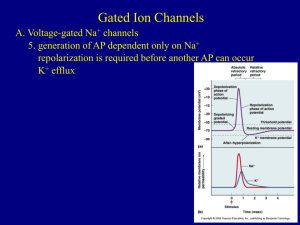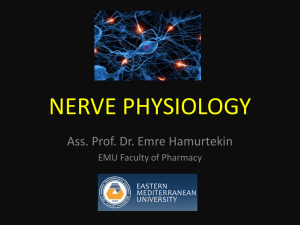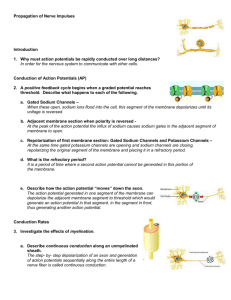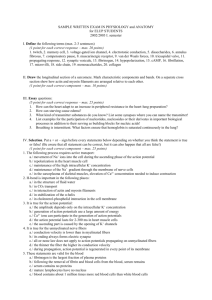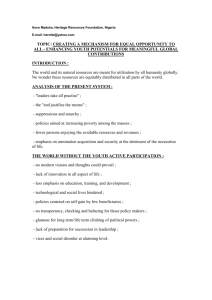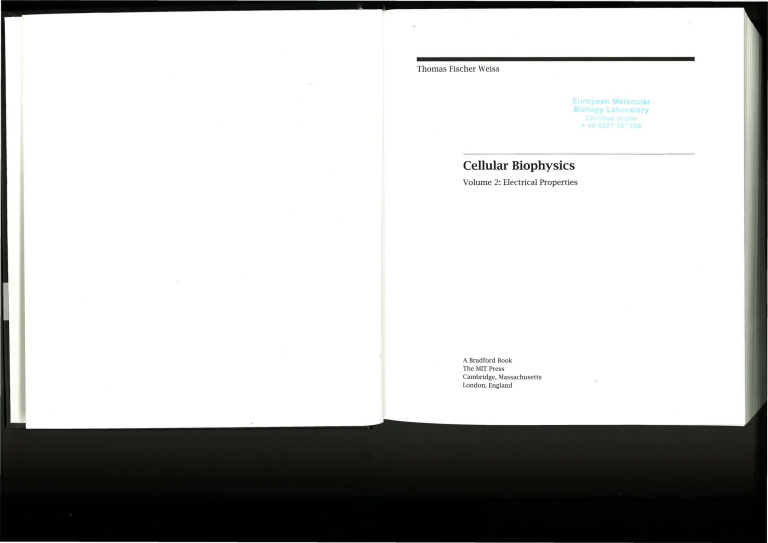
Thomas Fischer Weiss
Cellular Biophysics
Volume 2: Electrical Properties
A Bradford Book
The MIT Press
Cambridge, Massachusetts
London, England
To Au rice B, Max, Elisa, and Eric
© 1996 Massachusetts Institute of Technology
All rights reserved. No part of this publication may be reproduced in any form by
any electronic or mechanical means (including photocopying, recording, or information storage and retrieval) without permission in writing from the publisher.
This book was set in Lucida Bright by Windfall Software using ZzT£X and was
printed and bound in the United States of America.
Library of Congress Cataloging-in-Publication Data
Weiss, Thomas Fischer
Cellular biophysics I Thomas Fischer Weiss
v. <1- > ; em.
Includes bibliographical references and index.
Contents: v. 1. Transport- v. 2. Electrical properties.
ISBN 0-262-23183-2 (v. 1).- ISBN 0-262-23184-0 (v. 2)
1. Cell physiology. 2. Biophysics. 3. Biological transport.
4. Electrophysiology. I. Title.
QH63l.W44 1995
574.87'6041-dc20
R8 WEI
HD H788
95-9801
CIP
Contents
Contents in Detail
Preface
ix
xv
Units, Physical Constants, and Symbols
xxiii
1
Introduction to Electrical Properties of Cells
2
Lumped-Parameter and Distributed-Parameter Models of Cells
3
Linear Electrical Properties of Cells
4
The Hodgkin-Huxley Model
5
Saltatory Conduction in Myelinated Nerve Fibers
6
Voltage-Gated Ion Channels
List of Figures
List of Tables
511
52 7
Contents of Volume 1
Index
539
529
1
89
163
351
293
45
Contents in Detail
Preface
xv
Subject and Orientation of the Book
xv
Expected Background of the Reader
A Note to the Instructor xvi
xvi
Preparation of the Manuscript
Personal Perspective xix
Acknowledgments
References xxii
xx
Units, Physical Constants, and Symbols
Units
xvii
xxiii
xxiii
Base SI Units xxiii
Derived SI Units xxiii
Decimal Multiples and Submultiples of SI Units
Commonly Used Non-SI Units and Conversion
Factors xxiv
Physical Constants xxv
Fundamental Physical Constants xxv
Physical Properties of Water xxv
Atomic Numbers and Weights xxvi
Symbols xxviii
References xxxi
xxiv
Contents in Detail
X
Contents in Detail
xi
Problems
1
Introduction to Electrical Properties of Cells
1.1 A Brief Historical Perspective
1.2
1
References
1
3
Cellular Electric Potentials 3
1.2.1 Electric Potentials in Electrically Small Cells: Graded and
Action Potentials 3
1.2.2 Intracellular Transmission of Electric Potential in Large
Cells 16
1.2.3 Intercellular Transmission of Electric Potential 18
1.2.4 Effects Produced by Electric Potential Changes 20
1.3 Mechanisms of Generation of Membrane Potentials
1.3.1
1.3.2
1.6 Preview
3.4.1
3.4.2
3.4.3
3.4.4
Introduction
4
45
2.3 Electrically Small Cells 49
2.4 Electrically Large Cells: The Core Conductor Model 49
2.4.1 Assumptions of the Core Conductor Model 52
2.4.2 Derivation of the Core Conductor Equations 53
2.4.3 Consequences of the Core Conductor Model 57
Summary: A Comparison of Small and Large Cells
Exercises
72
Derivation of the Cable Equation 97
Time-Independent Solutions 101
Time-Dependent Solutions 119
Implications of Cable Properties 133
The Hodgkin-Huxley Model
4.1 Introduction 163
4.1.1
4.1.2
4.1.3
45
2.2 Electrical Variables 45
2.2.1 Current, Current per Unit Length, and Current Density 45
2.2.2 Resistance, Resistivity, Resistance per Unit Length, and
Resistance of a Unit Area 46
2.5
96
137
Problems 141
References 159
39
Lumped-Parameter and Distributed-Parameter Models of Cells
2.1
89
3.5 Summary: A Comparison of Small and Large Cells
Exercises 139
35
Exercises 41
References 42
2
Linear Electrical Properties of Cells
3.1 Introduction 89
3.4 Electrically Large Cells: The Cable Model
23
1.4 Role of Electric Potentials in Information Coding 24
1.4.1 The Neuron as an Information-Handling Element 25
1.4.2 Organization of the Nervous System 27
1.4.3 Coding and Processing of Information 27
1.4.4 Relation to Behavior: Signals in a Simple Reflex Arc 33
1.5 The Marvelous Giant Axon of the Squid
88
3.2 Electrical Properties of Cellular Membranes 89
3.2.1 Linearity of Voltage-Current Characteristics for Small
Perturbations of Membrane Potential 89
3.2.2 Voltage-Current Characteristics of the Membrane for
Small Perturbations: Membrane Conductance and
Capacitance 91
3.3 Electrically Small Cells 94
21
Macroscopic Mechanisms 21
Microscopic Mechanisms: Gated Membrane Channels
75
71
4.2
163
Historical Perspective 163
Key Notions Leading to the Hodgkin-Huxley Model
Mathematical Description of the Hodgkin-Huxley
Model 169
Revelation of Ionic Mechanisms by the Voltage-Clamp
Technique 173
4.2.1
4.2.2
4.2.3
Experimental Techniques 173
Membrane Current Components
Ionic Conductances 187
176
4.3 Synthesis of the Hodgkin-Huxley Model 198
4.3.1 Propagated Action Potential 198
4.3.2 Membrane Action Potential 206
164
Contents in Detail
Contents in Detail
xii
Problems
4.4 Explanation of the Electrical Excitability of the Giant Axon of the
Squid 209
4.4.1 Threshold 209
4.4.2 Refractoriness 221
4.4.3 The Strength-Duration Relation 224
4.4.4 Accommodation 221
4.4.5 Anode-Break Excitation 230
4.4.6 Repetitive Activity 231
4.4.7 Subthreshold Oscillations 231
4.4.8 Effect of Temperature 241
References
6
5
5.1
6.1
289
293
293
5.3 Electrical Properties of Myelinated Nerve Fibers 311
5.3.1 Electrical Properties of Nodes of Ranvier 311
5.3.2 Electrical Properties of Internodes 319
5.4 Model of Saltatory Conduction in Myelinated Nerve Fibers
5.5
Conduction Velocity of Myelinated Nerve Fibers
5.6 Causes of Saltatory Conduction
5.7 Summary
Exercises
6.2
6.3
5.1.1 Gross Morphology 293
5.1.2 Relation of Supporting Cells to Axons 295
5.1.3 Dimensions of Myelinated Fibers 301
5.2 Physiological Evidence for Saltatory Conduction 303
5.2.1 Generation of Action Potentials at Nodes 304
5.2.2 Extracellular Current Flow between Adjacent Nodes
5.2.3 The Saltatory Conduction Hypothesis 301
5.2.4 Experimental Test of Saltatory Conduction 308
334
333
330
323
Historical Perspective
6.1.1
6.1.2
6.1.3
6.1.4
6.1.5
6.1.6
6.1.7
263
Structure of Myelinated Nerve Fibers
6.4 Ionic
.·
359
360
Pharmacological Manipulations of Channels
Selective Permeability of Channels 363
Diversity of Ion Channels 366
Currents 377
360
Conduction and Displacement Currents 377
Production of Gating Currents by Voltage-Gated
Channels 3 83
Components of Membrane Current 383
Estimation of Gating Current as an Asymmetrical
Capacitance Current 384
Properties of the Gating Current 389
Summary and Conclusions 392
Currents in Single Channels 392
6.4.1
6.4.2
6.4.3
6.5
352
New Electrical Recording Techniques 352
Macroscopic Ionic Currents 354
Gating Currents 351
Single-Channel Currents 357
Development of Kinetic Models of Channel Gating
Channel Macromolecules 359
Summary 360
6.2.1
6.2.2
6.2 .3
Gating
6.3.1
6.3.2
6.3.5
6.3.6
305
351
Macroscopic Ionic Currents
6.3.3
6.3.4
320
344
Voltage-Gated Ion Channels
258
Saltatory Conduction in Myelinated Nerve Fibers
335
References
4.5 Summary 249
Appendix 4.1 Properties of Nonlinear, Time-Varying Conductors 251
Passive, Nonlinear, Time-Invariant Conductors 251
Passive, Nonlinear, Time-Varying Conductors 256
Exercises
Problems
xiii
Model
Gate
6.5.1
6.5.2
6.5 .3
Properties of Single-Channel Currents
Density of Ion Channels 397
Summary 398
392
of a Voltage-Gated Channel with One Two-State Molecular
399
General Considerations 400
Single-Channel Variables 406
Relation of Macroscopic and Single-Channel
Variables 424
6.5.4 Summary and Conclusion 428
6.6 Models of Multiple-State Channels 429
Contents in Detail
xiv
The Hodgkin-Huxley Model: A Molecular
Interpretation 430
6.6.2 The Theory of Multistate Channels 436
6.6.3 Summary 447
6.7 Voltage-Gated Ion Channel Macromolecules 448
6.7.1 Sodium Channel Macromolecule 448
6.7.2 Other Channel Macromolecules 455
Appendix 6.1 Markov Process Models of Single Channels
Preface
6.6.1
General Description 456
State Transition Probabilities 456
State Transition Rates 457
The Kolmogorov Equation 458
State Occupancy Probabilities 460
Single-Channel Variables 460
Dwell Times 462
Specific Channel Kinetic Schemes 464
Two-State Model 464
Three-State Model 466
Exercises 467
Problems 469
References 498
511
List of Tables
52 7
Contents of Volume 1
539
In scientific thought we adopt the simplest theory which will explain all the facts under
consideration and enable us to predict new facts of the same kind. The catch in this criterion lies in the word 'simplest.' It is really an aesthetic canon such as we find implicit in
our criticisms of poetry or painting. The layman finds such a law as ax;at = K(a 2x ;ay 2)
less simple than 'it oozes,' of which it is the mathematical statement. The physicist reverses this judgement, and his statement is certainly the more fruitful of the two, so far
as prediction is concerned.
-Haldane, 1985
Subject and Orientation of the Book
This and the companion text (Weiss, 1996) consider two basic topics in cellular
biophysics, which we pose here as questions:
List of Figures
Index
455
529
• Which molecules are transported across cellular membranes, and what are
the mechanisms of transport? How do cells maintain their compositions, volume, and membrane potential?
• How are potentials generated across the membranes of cells? What do these
potentials do?
Although the questions posed are fundamentally biological questions, the
methods for answering these questions are inherently multidisciplinary. For
example, to understand the mechanism of transport of molecules across cellular membranes, it is essential to understand both the structure of membranes and the principles of mass transport through membranes. Since the
transported matter may combine chemically with membrane-spanning macromolecules and/or carry an electrical charge, it is essential to understand the
principles of chemical kinetics and of transport of charged molecules in an
electric field.

